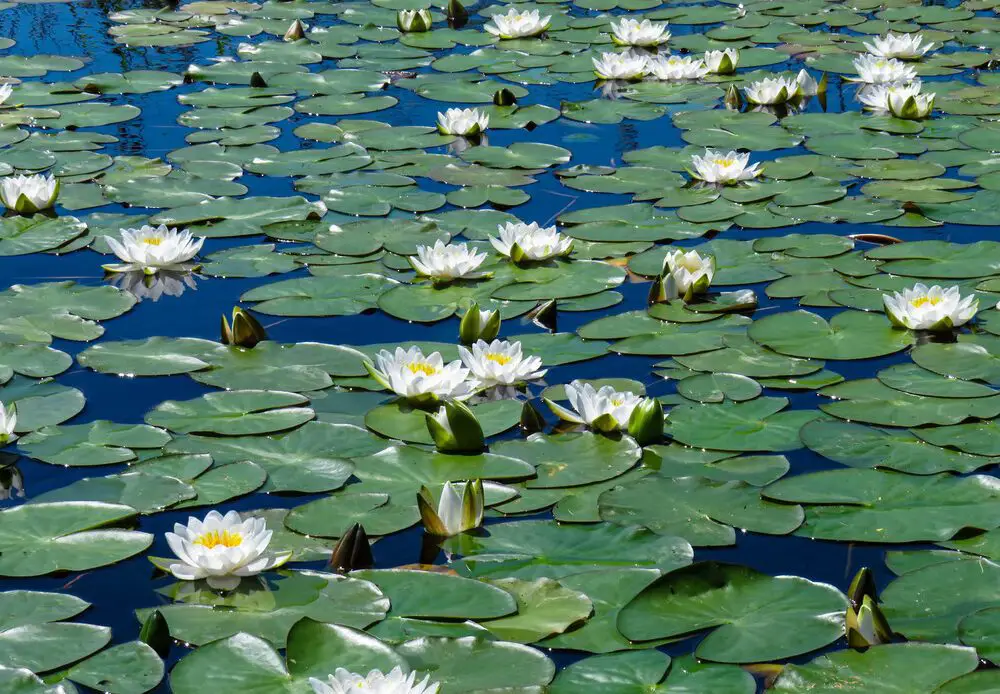
Last updated on May 22nd, 2023 at 12:14 pm
Water Lily is a very easily available flower; you must have seen it around you often. What we can all agree upon is that water lilies are beautiful! There’s something about the shape of these flowers, their petals, and the colors that makes them truly special. And they can grow even in soil or mud!
There are various types of water lilies, and they all prefer to live in ponds, lakes, or aquariums. The root word for this plant is ‘Nymphea,’ translated as ‘nymph.’ Nymph means a feminine soul living in nature, typically found in rivers, lakes, etc.
Water lilies have large, disk-like floating leaves and showy flowers. The origin of lilies can be traced back thousands of years. Perhaps that’s why they are so important in many cultures worldwide. The water lily flower’s meaning can differ for people of different cultures and beliefs.
The scientific name of water lilies is Nymphaeaceae, and so is the family to which they belong. The family of water-dwelling flowering plants is native aquatic herbs of temperate and tropical climates. They are found all around the world in seventy species and five genera.
For a flower to be a true Lily has to come from the genus of Lilium. This is because many flowers usually are named Lily but don’t have the origin of the true lily. Some examples of lilies that are not true lilies include Arum and Daylilies.
What does the Water Lily flower symbolize?
Because of where they are found, water lilies have been associated with the Greek and Latin nymphs. They are also believed to symbolize purity, virtue, and innocence.
Water lilies are found in water. And so, they have a symbolic meaning relating them to birth and essence, which ultimately means the circle of life. They are the official birth flower for July.
In ancient Egyptian culture, water lilies were seen as a symbol of unity. For most of history, Ancient Egypt was two interconnected kingdoms – Upper Egypt and Lower Egypt. Water Lily, symbolizing Upper Egypt, was paired with the papyrus flower from Lower Egypt, and together they represented the connection between the two kingdoms.
Water lilies find an important place in Hinduism and Buddhism. The enigmatic lily pad flower meaning in these religions is tied to many sacred and spiritual elements. That strengthens the connection between divinity, spiritual enlightenment, and the water lily. The flower symbolizes the potential to ‘rise above’ the rest and to attain enlightenment, or moksha.
The water lily flower is mentioned in the Old Testament. It is linked to innocence, purity, and love.
One of the major gods worshiped in the Mayan culture was the Water Lily Jaguar. It was connected to royalty and liberation. Images of gods with water lilies are depicted on the worshiped vessel.
All in all, the water lily flower symbolic meanings are:
- resurrection
- enlightenment
- beauty
- rebirth
- peace
- essence
- chastity
- purity
- innocence
Meaning of the Water Lily flower colors
White color
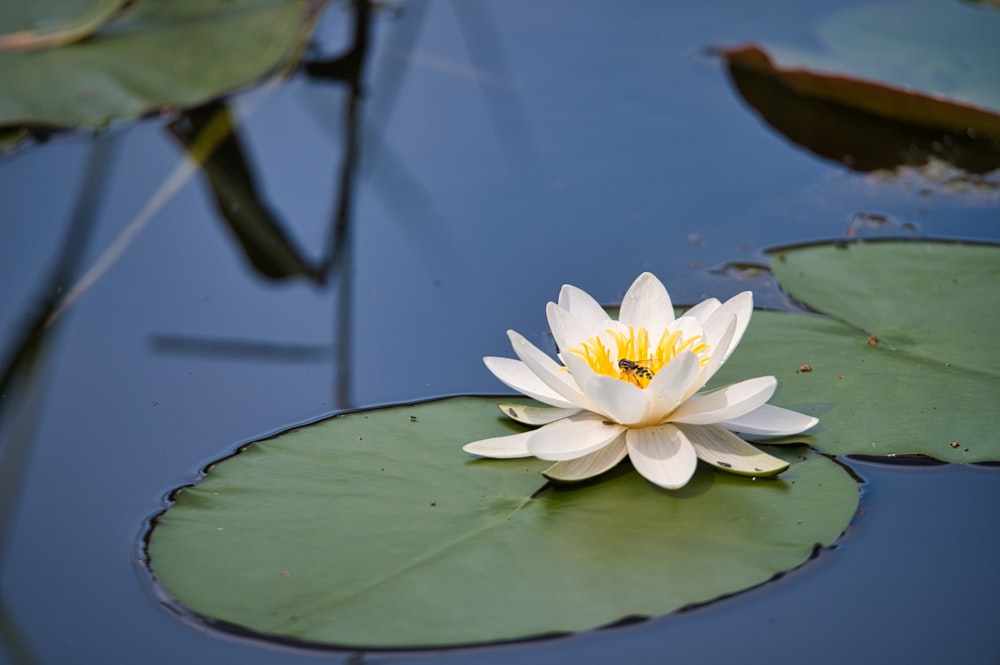
White water lily flowers represent rebirth, the revival of the soul, purity, and promise. These stunningly pretty flowers also convey emotions of sympathy, innocence, and grief.
Pink color
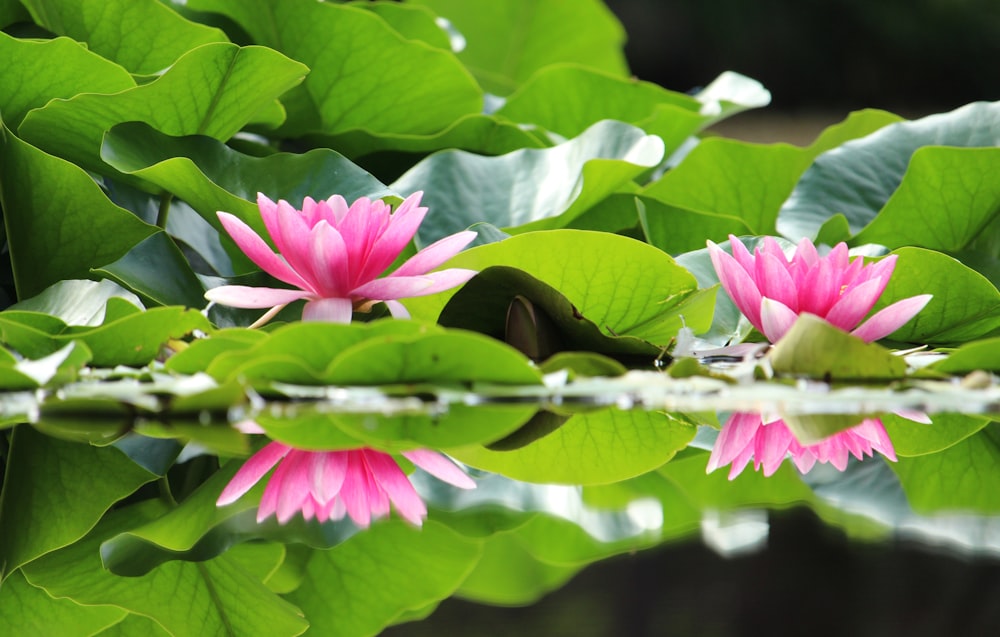
Pink water lilies are the most widely found lily pad flowers. These flowers, with delicate color, stand for feminine power and beauty. They are also associated with feelings of admiration, friendship, youthfulness, joy, and love. Sometimes, the pink water lily flower’s meaning is connected to wisdom and enlightenment.
Red color

Like the red rose, this lively and fiery flower symbolizes love and often has a romantic symbolic meaning. Vibrant, fiery, romantic red water lilies represent passion and admiration. Red water lily flowers are also connected to wealth.
Orange color
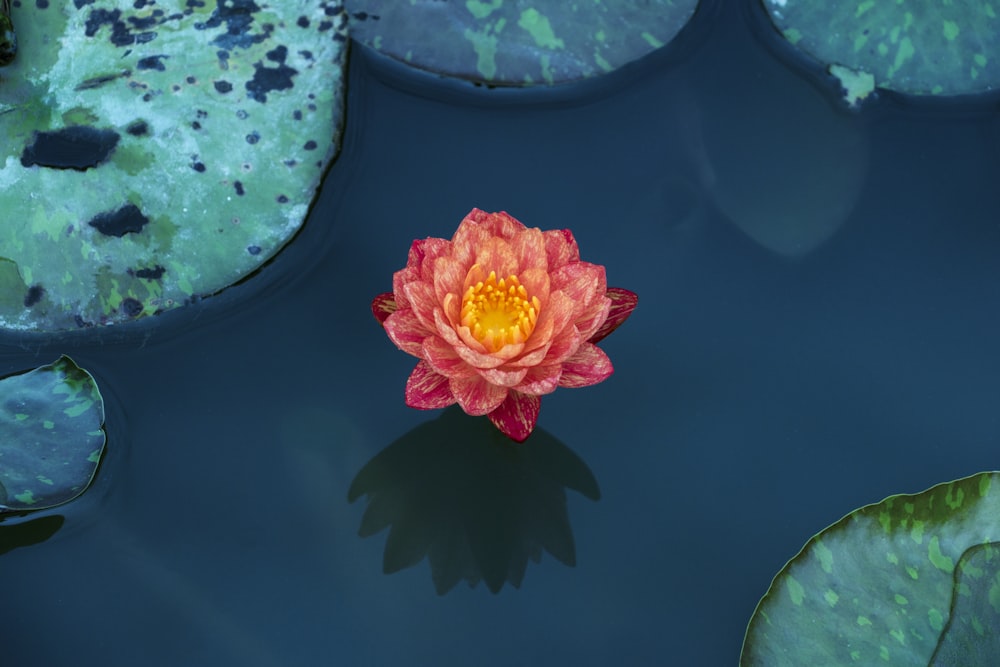
A strong and bright flower symbolizes confidence and a never give up attitude. Different meanings for orange water lilies include warmth, life satisfaction, positivity, confidence, and assurance. Due to the brightness of this color, orange water lilies stand out from the crowd- often symbolizing uniqueness. This explains why orange water lilies represent respect and honor. These flowers also represent important milestones and a person full of joy, enthusiasm, and life.
Purple color
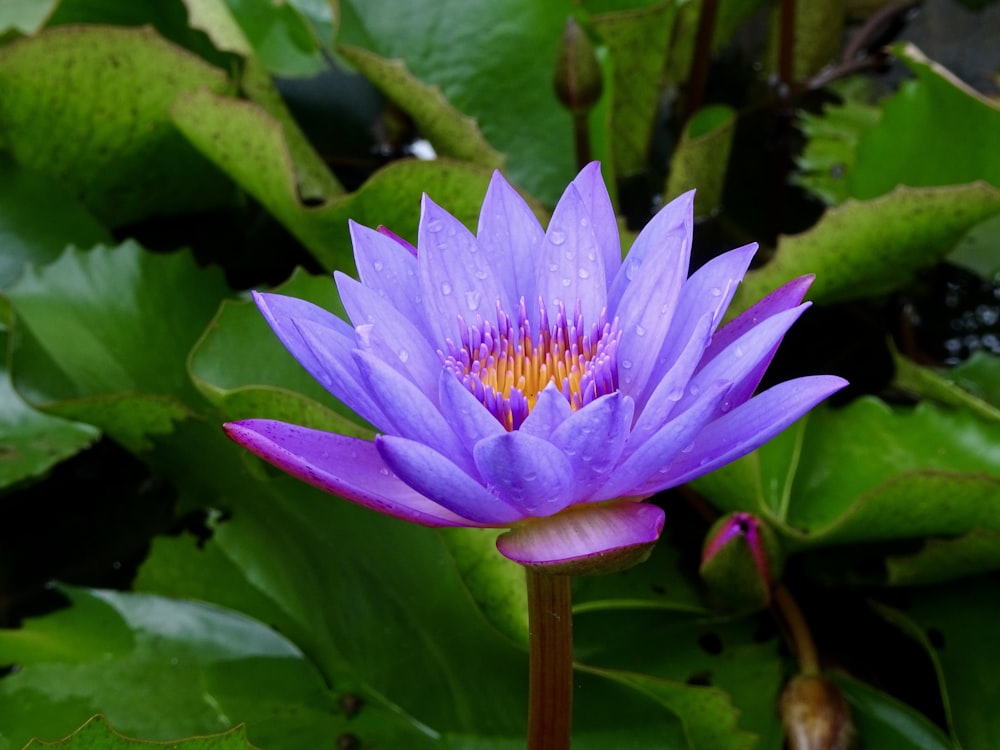
Purple has always been associated with accomplishment, dignity, admiration, and pride, which has also been linked to the purple waterlily. Purple water lilies have stood for royalty throughout different cultures and are often regarded as rare and beautiful. This could be why purple water lilies represent passion, privilege, and elegance.
Yellow color
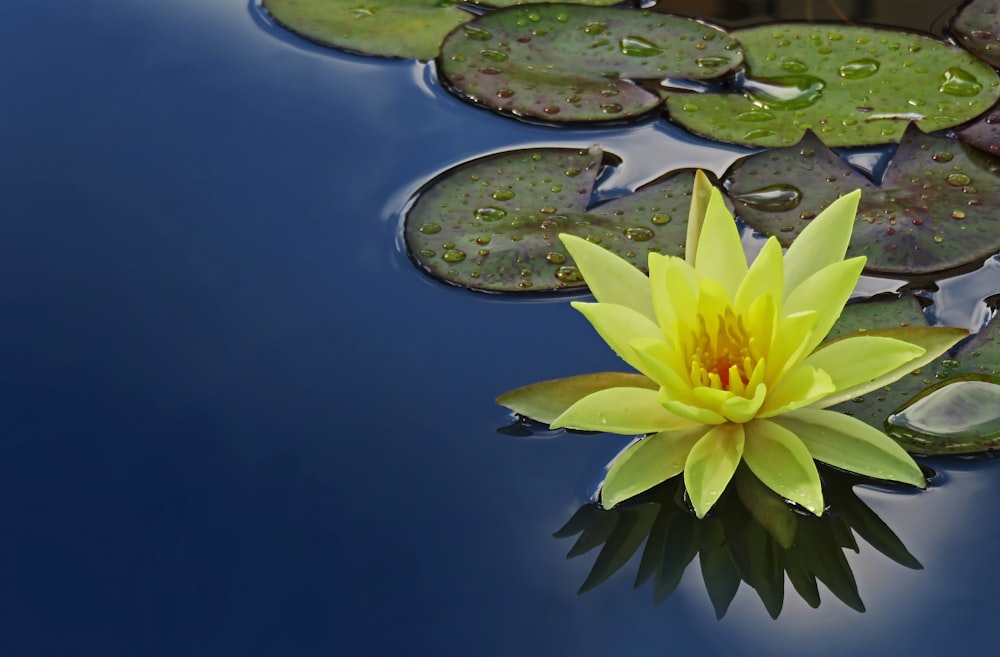
These beautiful and bright flowers have been known to represent the quality of gratitude or thankfulness. They are also symbols of friendship and happiness. In bright yellow and pale yellow shades, yellow water lilies symbolize energy, good health, new beginnings, and positivity, as the sunny color could uplift anybody’s mood in an instant.
Blue color
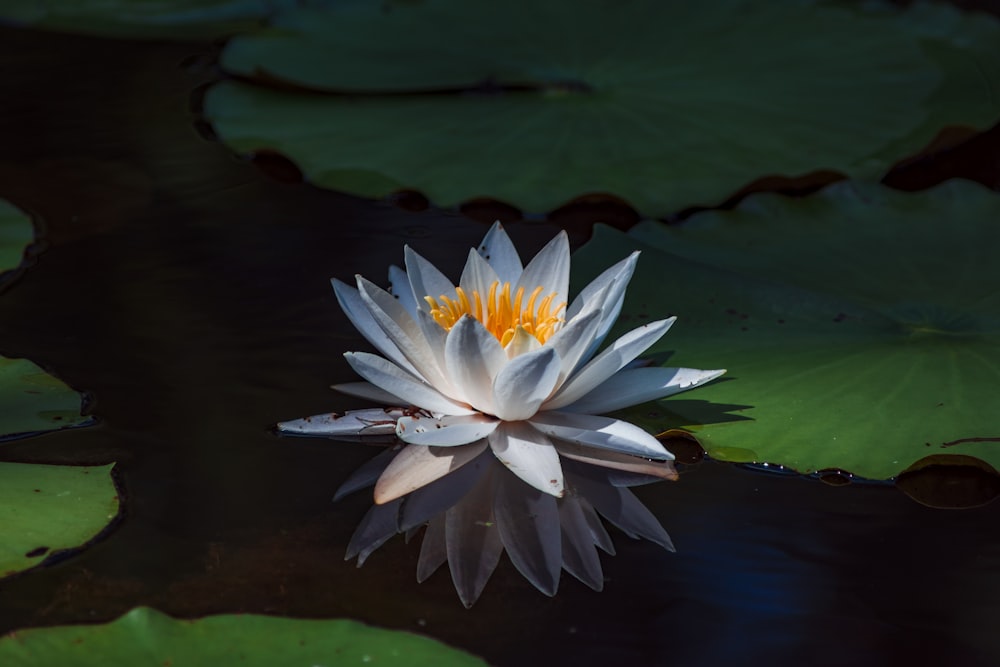
Native to the Nile delta, the Egyptian blue water lily or Nymphaea caerulea is among the rarest of their kind. They represent calmness, wisdom, and recovery. Blue water lily flowers are also called the flower of love, which long represent gender and sexuality. In Egyptian culture, they have been used to represent fertility and creation.
Interesting facts about the Water Lily flowers
- As water lilies grow in mud, but the lily pads and flowers remain untouched by the muck, its habit of growing in mud is a well-known metaphor.
- Images of water lilies blooming in landscape ponds are depicted in Egyptian tomb paintings dating back to 1500 BC.
- The national flower of Bangladesh is the white water lily due to its widespread growth in the country. They stand for Bangladesh’s beauty and resilience.
- Each lily pad flower blooms for about four days. After that, it sinks to rot under the water.
- Claude Monet, the famous impressionist painter, often used water lilies in his work. More than two hundred pieces of artwork by the painter featured water lilies.
- White lilies found a special place in ancient Egyptian culture. The mere image of a white water lily flower was considered a source of strength and power. Impressions of lily pad flowers were used widely in artwork, monuments, adorning ceramics, and jewelry, among other things.
- Remains of water lilies were found in the tomb of Ramesses II and other pharaoh mummies.
- The importance of the flower can be gauged from its connection to the sun god Ra. It was believed he emerged from a water lily.
- In ancient Egypt, water lily flowers were cultivated in ponds to offer to the gods.
How to grow Water Lily flowers
Water lilies bring a magical touch to freshwater ponds or containers. Some exotic-looking beauties bloom during the day, while others bloom at night, revealing cup or star-shaped flowers.
- Use heavy clay or loam soil that is free from herbicides and pesticides.
- Add a thin layer of gravel over top of the soil to help keep it from clouding the water.
- Choose a spot where they can receive at least six hours of sunlight daily.
- Water the compost well and allow excess water to drain before placing it in the pond.
- Apply fertilizer pellets for aquatic use about once a month directly into the soil to avoid interfering with the surrounding pond water’s pH.
How to care for Water Lily flowers
- Fertilize the water lilies generously throughout the growing season.
- Remove yellowing leaves and spent blooms from plants as they appear.
- Prune the dying flowers as they sink below the surface to ensure many blooms.
- Repot them next spring.
Best time to gift Water Lily flowers
The water lily flower’s meaning differs for different people and cultures. Sometimes they symbolize good fortune and happiness, at others, they symbolize grief and unity. These flowers are perfect gifts for multiple occasions, from births to weddings to even wakes. They can represent mourning as well as be used to express congratulations.
Also, given that they are the official birth flower for July, water lily flowers can be gifted to someone whose birthday falls in July can be a good idea.
Conclusion
Water lily flowers are mesmerizing and mood-lifting. Their deep spiritual and emotional meanings make them even more special.
If you want to know and learn more about flowers, we at PansyMaiden can help you. Check out our fun, easy-to-read, and informative flower-related content that you will surely enjoy!
